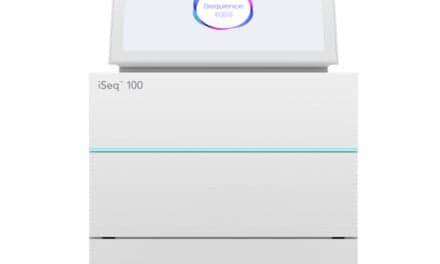Recently published study data suggest that use of the Envisia genomic classifier from Veracyte Inc, San Francisco, improves the diagnosis of patients undergoing evaluation for interstitial lung diseases, including idiopathic pulmonary fibrosis.1
The Envisia classifier is the first commercially available test that may help distinguish idiopathic pulmonary fibrosis from other interstitial lung diseases without the need for risky surgery. The Envisia classifier recently received Medicare coverage, making it the first test of its kind for improving the diagnosis of idiopathic pulmonary fibrosis to be covered for the nation’s 55 million Medicare patients.
“Idiopathic pulmonary fibrosis is often challenging to distinguish from other interstitial lung diseases, but timely and accurate diagnosis is critical so that patients with idiopathic pulmonary fibrosis can access therapies that may slow progression of the disease, while avoiding potentially harmful treatments,” explains Ganesh Raghu, MD, professor of medicine and director of the center for interstitial lung diseases at the University of Washington, and lead author of the new paper. “Our results with molecular classification through machine learning (the Envisia classifier) are promising and, along with clinical information and radiological features in high-resolution computed tomography imaging, physicians through multidisciplinary discussions may be able to utilize the molecular classification as a diagnostic tool to make more-informed and confident diagnoses.”
The new paper includes data from a clinical validation study and a clinical utility study, both conducted using data from patients enrolled in the ongoing, prospective, 29-site, blinded bronchial sample collection for a novel genomic test (Brave) study. The clinical validation study assessed the ability of the Envisia classifier to identify the usual interstitial pneumonia pattern, whose presence is essential to diagnosis of idiopathic pulmonary fibrosis. Among 49 patients who met the study criteria (and were not used to train the genomic classifier algorithm), the Envisia classifier achieved a specificity of 88% and sensitivity of 70% for the usual interstitial pneumonia pattern. These findings mean that the test would be expected to identify more than two-thirds of usual interstitial pneumonia cases with a high degree of accuracy, while minimizing the number of false-positive results, providing physicians with greater confidence in their diagnosis. By contrast, data show that high-resolution computed tomography imaging, which is typically used in idiopathic pulmonary fibrosis diagnosis, has a sensitivity of just 43% for usual interstitial pneumonia.
In the clinical utility study, known as clinical utility analysis of a usual interstitial pneumonia genomic classifier in the Brave trial (Catalyst), two multidisciplinary teams conducted blinded reviews of 94 study participants’ medical charts. Researchers found that when the Envisia classifier was used as a complement to high-resolution computed tomography in a multidisciplinary team evaluation, there was high agreement (86%) on idiopathic pulmonary fibrosis versus nonidiopathic pulmonary fibrosis diagnoses when evaluating the same patients with high-resolution computed tomography and surgical histopathology results. Further, when both multidisciplinary teams made an idiopathic pulmonary fibrosis diagnosis, the authors observed that the team with Envisia classifier results was significantly more confident in its idiopathic pulmonary fibrosis diagnosis than the team with surgical histopathology results (89% versus 56%).
“These findings show that, when paired with high-resolution computed tomography results and patient clinical history, the Envisia classifier gave physicians a higher level of confidence in making an idiopathic pulmonary fibrosis diagnosis,” says Sadia Benzaquen, MD, director of interventional pulmonology at University of Cincinnati Health, and an author of the paper.
“The data published today underscore the performance and significant value that the Envisia genomic classifier brings to physicians, patients, and the healthcare system,” notes Bonnie Anderson, chairman and chief executive officer of Veracyte. “We believe our test has the potential to transform the diagnosis of idiopathic pulmonary fibrosis and other interstitial lung diseases. More immediately, this new paper, combined with the Medicare coverage policy for the Envisia classifier issued recently, will fuel our efforts to make the classifier more widely available to the patients across the country who can benefit from it.”
For further information, visit Veracyte.
Reference
1. Raghu G, Flaherty KR, Lederer DJ, et al. Use of a molecular classifier to identify usual interstitial pneumonia in conventional transbronchial lung biopsy samples: a prospective validation study. Lancet Respir Med. Epub ahead of print, April 1, 2019; doi: 10.1016/S2213-2600(19)30059-1.






